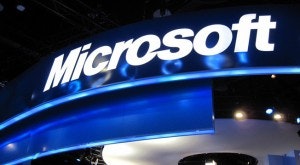
Encouraging results
Microsoft Corporation (NASDAQ:MSFT) reported record earnings of $6.06 billion for the third quarter of FY13 on revenues of $20.49 billion. Significant growth was observed in company’s cloud computing product, Office 365 with net seat additions up 5 times over the prior year. Microsoft Corporation (NASDAQ:MSFT) also released upgrade package for Office, giving greater mobility to the existing software.
Something is still wrong
All of this appears to be a good painting that has been fantastically conceived and executed. However, this perfect picture is blemished by the performance of Windows 8 that failed to attract users as expected. Even though Microsoft Corporation (NASDAQ:MSFT) went “all in” to make Windows 8 a revolutionary product that would enhance computing experience for end users, it failed to enchant users and experts alike.
The exact numbers for Windows 8 have not been released by the company, but revenue for the Windows division provides some clue about its performance. This article does well to bring out Microsoft Corporation (NASDAQ:MSFT)’s attempts to popularize Windows 8 after a lackluster launch last year. The company was desperate to get existing users upgraded to the new operating system by offering upgrade packages as cheap as $14.99 last year.
Windows 8, Windows RT and more
The main objective behind Windows 8 was to revive the popularity and sales of PC devices, Microsoft Corporation (NASDAQ:MSFT)’s core competency. Windows 8 was positioned as a revolutionary product that would change user’s desktop experience and enhance sales for PC and laptop devices. The new OS however, witnessed a lackluster launch followed by low adoption rates mainly on account of a score of changes pushed down on the users at one go. After all, it seems having “everything at once” has not worked too well for the company.
Sometime back, the company launched Windows RT, having the same features as Windows 8, built for ultra thin PC devices and tablets running on ARM processors and meant to be a challenge to Android and iOS mobile devices. Again, the OS failed to capture users’ attention due to a lack of stellar apps, among other things. Microsoft Corporation (NASDAQ:MSFT) marketed Windows RT as a version of Windows 8, but users were disappointed when they found out significant differences between them. As a result, Windows RT had two holes in the bag: lack of apps for mobile devices, and a distorted customer perception, to bring down its sales.
As per latest reports, users spend most of the time on apps while using their handsets. Apple Inc. (NASDAQ:AAPL)’s iOS is the undisputed leader when it comes to a collection of apps that range from small utility apps like calculators to high entertainment graphic games. In February, Apple Inc. (NASDAQ:AAPL) had more than 8 hundred thousand apps in the app store. Google Inc (NASDAQ:GOOG)’s play store featured a collection of 7 hundred thousand apps during that time. When compared to Windows store’s app count of just 50,000, these figures seem gigantic.
Its performance time
Talking about quarterly results, let us start with Apple Inc. (NASDAQ:AAPL), is in the news since the announcement of its Q2 2013 results. For the first time in a decade, Apple reported a decline in year over year profits, to the tune of 18%. One of my major takeaways from this result is a slowdown of innovation and experimentation. Apple Inc. (NASDAQ:AAPL) exemplifies innovation and owes its resurrection to such. In order to sustain the expectations of investors, Apple Inc. (NASDAQ:AAPL) needs to innovate, invent and design revolutionary products like the iPod and iPad, that customers cannot refuse to buy.
Google Inc (NASDAQ:GOOG) reported a solid first quarter with revenues up by 31% to $14 billion and GAAP operating income pegged at $3.48 billion. Expenditure in the quarter increased on account of restructuring charges related to Motorola Mobility, that incurred an operating loss of $271 million. Traffic acquisition costs (TAC) stayed stable at approximately 25% of ad revenues throughout the year, enabling the company to convert a similar percentage of revenues to profits as last year.
Microsoft Corporation (NASDAQ:MSFT), as I mentioned earlier, declared positive results for the quarter with revenues of $20.49 billion. One of the segments that stood out for phenomenal performance was the Entertainment and Devices division, which generated net income of $342 million as compared to an operating loss of $228 million in the previous year. Such strong performance can be attributed to the growth of Xbox Live, with around 46 million members worldwide.
The bottom line: Skeptical
In spite of seeing a splendid quarterly performance, I am skeptical about investing in Microsoft Corporation (NASDAQ:MSFT). The reason behind this is the uncertainty around its main division, Windows 8. When a company declares a product as revolutionary as Windows 8, I expect it to bring about a major positive shift in business operations and financials. The company has forayed again into tablet devices with its Windows 8 OS and even though we are seeing some positive reception, I do not think it’s enough to call it a comeback.
In my opinion, it would not be prudent to invest in Microsoft Corporation (NASDAQ:MSFT) until some concrete numbers can be seen for its flagship product, Windows 8.
The article Having Everything at Once Is Not Working for This Company originally appeared on Fool.com.
Copyright © 1995 – 2013 The Motley Fool, LLC. All rights reserved. The Motley Fool has a disclosure policy.
